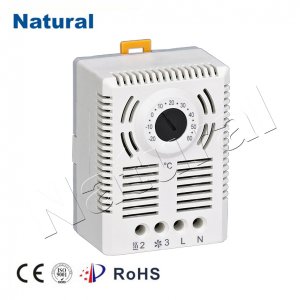 28 items Patent
28 items Patent
 28 items Patent
28 items Patent
 28 items Patent
28 items Patent

Discover the benefits of using a hysteresis thermostat for temperature control in your home or business. Learn about the unique features of this device and how it can improve energy efficiency and comfort.

Maintaining a comfortable and consistent indoor temperature is essential for creating a healthy and inviting environment. However, traditional thermostats can be inefficient, resulting in temperature fluctuations and wasted energy. A hysteresis thermostat offers a unique solution to this problem, allowing you to maintain optimal temperature levels with greater precision and efficiency.
So, what is a hysteresis thermostat, and how does it work? Unlike traditional thermostats that turn on and off at a set temperature, a hysteresis thermostat features a unique temperature differential, or hysteresis, between when it turns on and when it turns off. This means that the thermostat will not turn on until the temperature drops below a certain point, and it will not turn off until the temperature rises above another point.
Here are some of the benefits of using a hysteresis thermostat:
Energy Efficiency: By maintaining a temperature differential, a hysteresis thermostat can help reduce energy consumption and save you money on your energy bills. Because the thermostat is not constantly turning on and off, it can prevent unnecessary energy usage and help your HVAC system work more efficiently.
Temperature Stability: A hysteresis thermostat can help maintain a stable temperature throughout your home or business, preventing temperature fluctuations that can lead to discomfort and wasted energy.
Improved Comfort: With its precise temperature control, a hysteresis thermostat can provide you with greater comfort and control over your indoor environment.
Longevity of HVAC System: By reducing the workload on your HVAC system and preventing unnecessary cycling, a hysteresis thermostat can help extend the lifespan of your system and reduce maintenance costs over time.
When choosing a hysteresis thermostat, there are several features to consider. These include:
Temperature Differential: Look for a hysteresis thermostat with an appropriate temperature differential for your space. The larger the differential, the more energy-efficient the thermostat will be, but it may also result in larger temperature swings.
Compatibility: Make sure the hysteresis thermostat is compatible with your HVAC system, as some thermostats only work with specific systems.
User-Friendly Interface: Choose a hysteresis thermostat with a user-friendly interface that makes it easy to set and adjust the temperature differential and other settings.
Programmable Settings: Consider a hysteresis thermostat with programmable settings, allowing you to set different temperature differentials for different times of the day or week.
Overall, a hysteresis thermostat is an excellent investment for anyone looking to improve energy efficiency, comfort, and the longevity of their HVAC system. By choosing the right device and taking advantage of its features, you can enjoy a more comfortable and energy-efficient indoor environment.